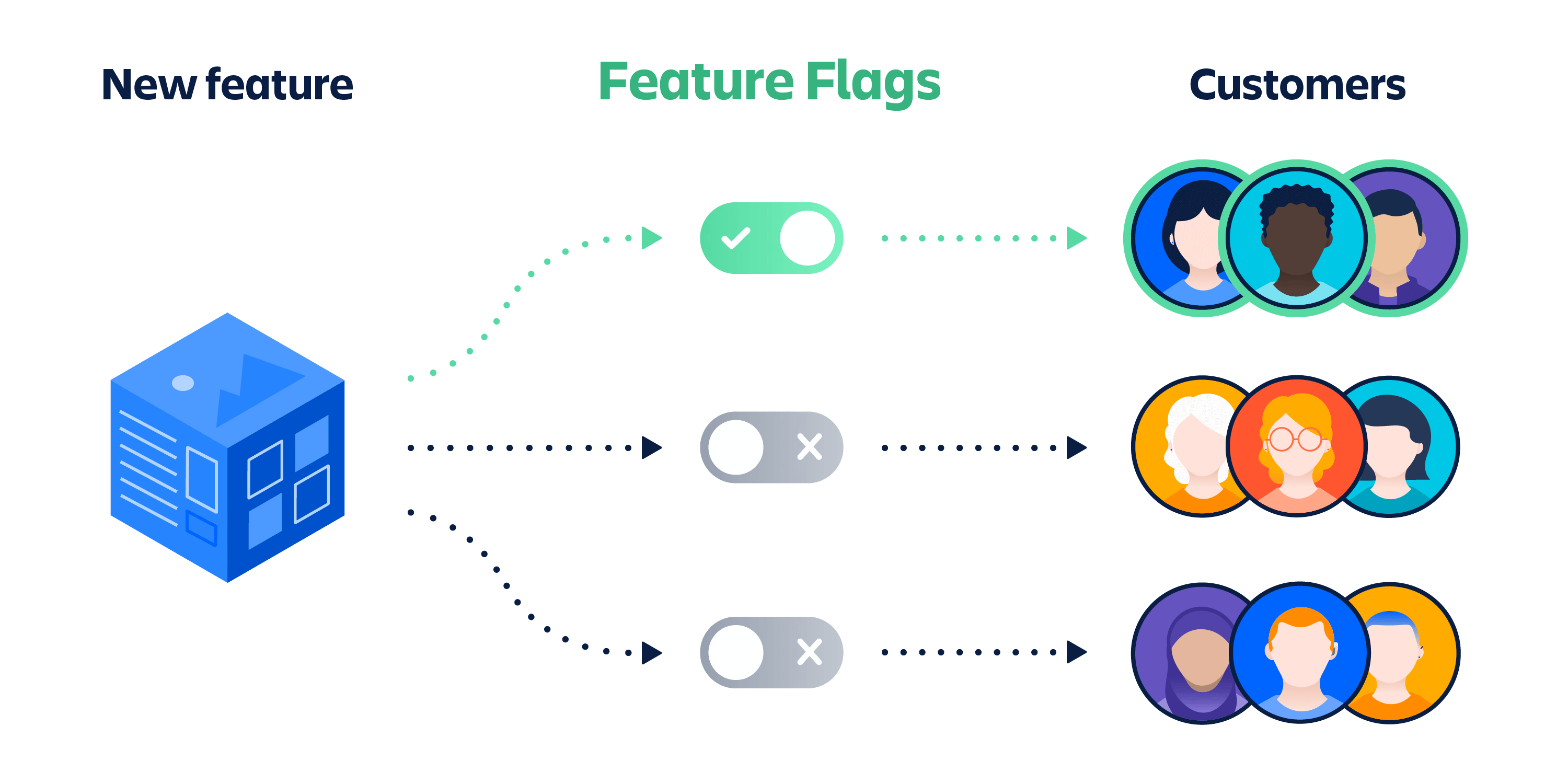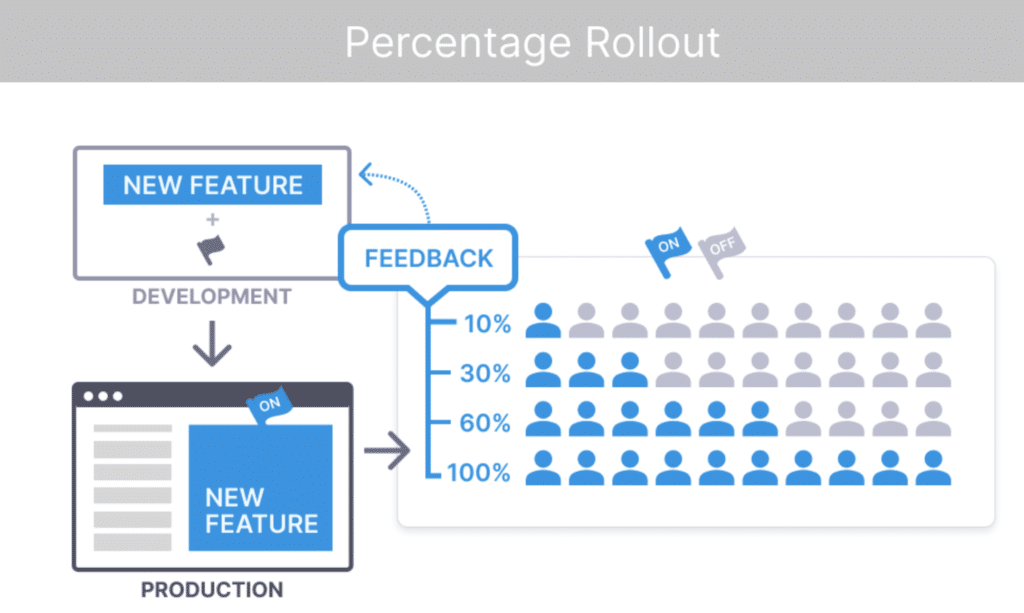Feature Flag: Release New Versions of Software Safely
A feature flag, also known as a feature toggle, is a technique in software development that turns certain features on and off during runtime, without the need to modify the code.

Introduction
The world of software development is complex and ever-changing. Among the numerous tools and techniques utilized by developers today, feature flags stand out as a particularly powerful and flexible tool. This article explores what feature flags are, why they're important, their benefits, best practices, and the feature flag solutions available on the market.
What is Feature Flag?
A feature flag, also known as a feature toggle, is a technique in software development that turns certain features on and off during runtime, without the need to modify the code.
Imagine a scenario where you're building an e-commerce website. You have a new recommendation engine feature that's ready to be tested but not yet ready for all users. A feature flag allows you to selectively enable this feature for a specific group, like internal testers or a small set of users, without affecting everyone else.
Why We Should Use It
Feature flags have emerged as a game-changing tool in the software development process. Their key advantage lies in enabling teams to deploy code incrementally, rather than all at once, reducing the risk associated with deployments. For instance, Netflix famously uses a 'chaos monkey' feature flag that randomly shuts down services in their live environment to ensure resilience.
Feature flags also encourage experimentation. Developers can test new features in a production environment without affecting all users. They allow for a/b testing and gradual feature rollouts, enabling teams to gather user feedback and iterate on their work more rapidly.
Feature flags can mitigate deployment risk by enabling 'dark launching', where new features are deployed into the production environment but kept inactive for general users. This allows developers to test the impact and functionality of a new feature on the production environment without disrupting the service for all users.
For example, imagine an online streaming service like Netflix introducing a new recommendation algorithm. Deploying this feature all at once for all users could potentially disrupt service if the new algorithm has unexpected issues. But with feature flags, Netflix can deploy the new algorithm in the production environment and initially only activate it for a small subset of users. This enables real-world testing and bug fixing without service-wide disruption.

Benefits
In addition to risk mitigation, feature flags offer numerous benefits. They allow for user-specific customization, where features can be tailored to the needs of specific user groups. This has become a cornerstone of personalized user experience design.
Feature flags simplify the testing and quality assurance process, allowing developers to isolate the impact of individual features. Furthermore, they allow for a faster feedback loop between developers and users, as new features can be tested and modified quickly based on user responses. LinkedIn, for example, used feature flags to test and eventually rollout their redesigned interface.
With feature flags, teams can develop and integrate new features into the main codebase even before the features are fully developed. This helps avoid long-lived feature branches that can be challenging to merge due to diverging code paths. For example, imagine a team working on an advanced image processing feature that takes several weeks to develop. Without feature flags, this feature would be developed on a separate code branch and potentially face integration issues later. But with a feature flag, the new feature can be merged early into the main codebase and simply kept inactive until it's ready.

Additionally, feature flags allow for canary testing, where new features are gradually rolled out to an increasing percentage of users. This enables teams to monitor the impact and performance of the new feature on a growing user base and roll back if any issue arises. For instance, Facebook used canary testing with feature flags when introducing their "Reactions" feature to ensure smooth rollout and immediate rollback if needed.
The Options: Feature Flag Solutions Available on the Market
Several solutions are available that offer robust feature flag management systems. Some of the top platforms include:
- LaunchDarkly: This is a full-fledged feature management platform that supports various flag types, custom roles, and flag dependencies. It provides an intuitive dashboard for flag management and a robust SDK for different programming languages. It's also built for scale, capable of handling billions of feature flag evaluations per day.
- Split: Split emphasizes data-driven decisions. It provides comprehensive flag analytics to gauge feature impact and has built-in integration with popular data analysis tools. Split also supports multivariate flags, where a flag can have multiple variants rather than just on/off states.
- Unleash: This open-source option is ideal for teams who wish to maintain full control over their feature flag management. It's fully customizable, although it requires self-hosting and thus more setup and maintenance compared to other solutions.
- Flagsmith: Flagsmith is another open-source option with a focus on simplicity and ease of use. It provides both a cloud-hosted and a self-hosted solution, giving teams flexibility.
Each of these solutions has its strengths and weaknesses, and the best one for you will depend on your specific needs. LaunchDarkly, for instance, excels with its holistic feature management system, but it might be overkill for smaller teams. Split offers strong analytical capabilities, enabling data-driven decisions, but its interface can be complex for beginners. Rollout offers detailed control over feature distribution but may require more time for setup and management.
It's essential to evaluate the cost, ease of use, integration, support, and specific capabilities of each solution before deciding. A small startup might prefer a cost-effective and straightforward solution, while a large corporation might need a more comprehensive and powerful system.
About 8grams
We are a small DevOps Consulting Firm that has a mission to empower businesses with modern DevOps practices and technologies, enabling them to achieve digital transformation, improve efficiency, and drive growth.
Ready to transform your IT Operations and Software Development processes? Let's join forces and create innovative solutions that drive your business forward.
Subscribe to our newsletter for cutting-edge DevOps practices, tips, and insights delivered straight to your inbox!
